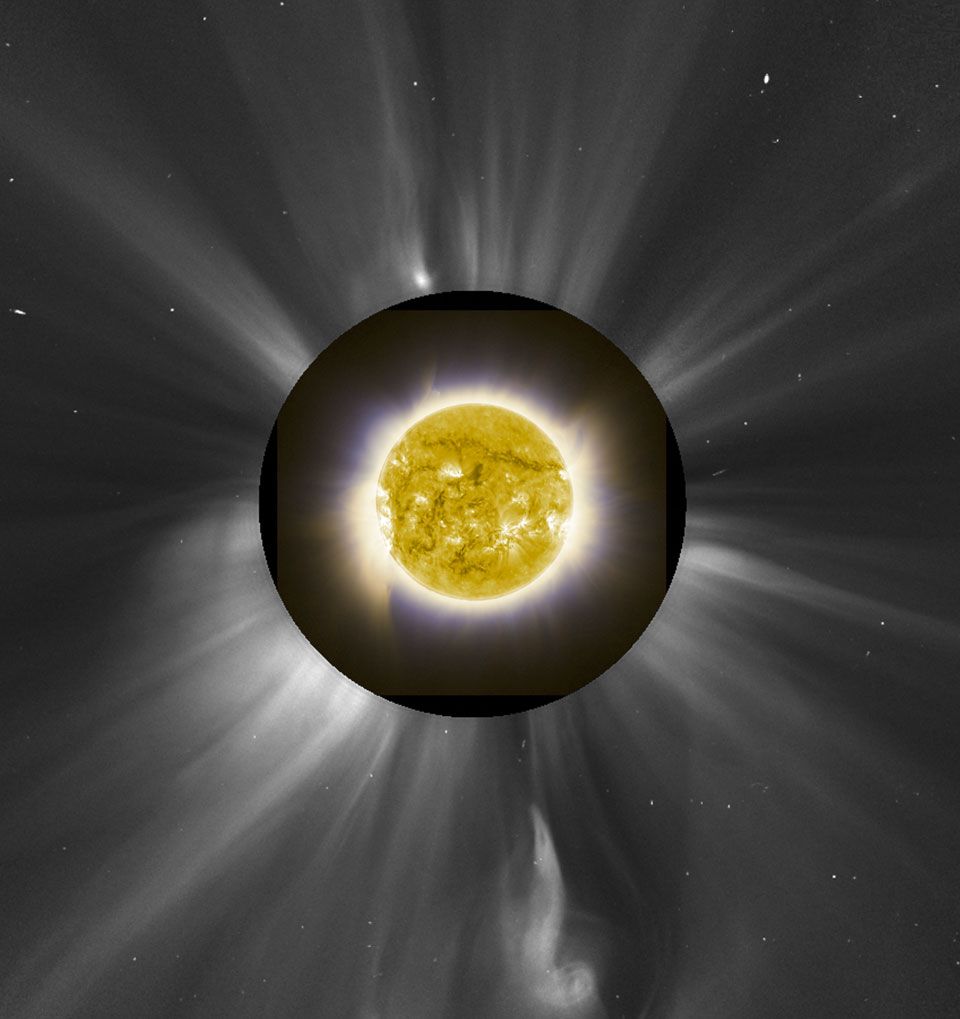An Active Sun During a Total Eclipse
Image Credit & Copyright:
D. Seaton (ROB),
A. Davis & J. M. Pasachoff
(Williams College Eclipse Expedition),
NRL,
ESA,
NASA, NatGeo
Sometimes, a total eclipse of the Sun is an opportunity.
Taking advantage of such, the above image shows the
solar eclipse earlier this month
as covered and uncovered by several different solar observatories.
The innermost image shows the Sun in
ultraviolet light as recorded over a few hours by the
SWAP instrument aboard the
PROBA2 mission in a
sun-synchronous low Earth orbit.
This image is surrounded by a ground-based eclipse image, reproduced
in blue, taken from
Gabon.
Further out is a circularly blocked region used to artificially dim the central sun by the
LASCO instrument aboard the Sun-orbiting
SOHO spacecraft.
The outermost image -- showing the outflowing
solar corona -- was taken by LASCO ten minutes after the eclipse and shows an outflowing solar corona.
Over the past few weeks, our Sun has been showing an
unusually high
amount of
sunspots,
CMEs, and
flares -- activity that was generally expected as the Sun is currently going through
Solar Maximum -- the busiest part of its 11 year
solar cycle.
The above resultant image is a picturesque montage of many solar layers at once that allows
solar astronomers to better match up active areas on or near the Sun's surface with
outflowing jets in the Sun's corona.





